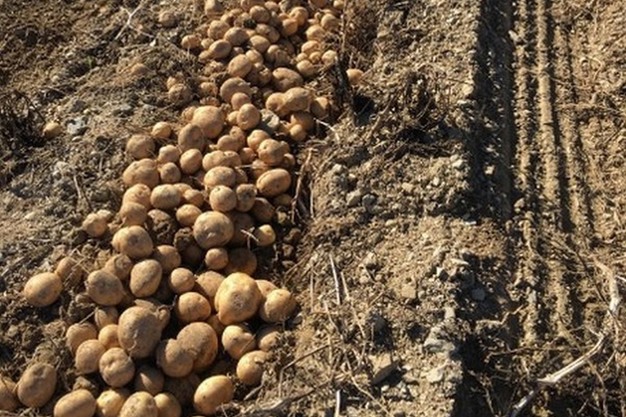Is there a potato shortage as some headlines indicate? “I don’t see it,” says Ken Gad of Cambridge Farms Inc. “There’s no shortage in the overall category of potatoes. What there is a shortage of specific varieties and colors of potatoes.”
Looking back at the growing season, the East Coast has had a deficit of potatoes. “Maine suffered a lot of weather issues so they didn’t store the same crop or quality crop that they normally would,” he says, noting this is particularly so on reds, yellows and whites. “We had a fair amount of Russets but even that got cut.”
In Canada, the eastern provinces also had a smaller crop and a smaller percentage of usable crop due to quality issues.
A look out West
In turn, while that didn’t put pressure on the Russet crop out west, it did so on the red and yellow potato supplies particularly. While Wisconsin had some issues, Idaho had a sizeable crop with some 35,000 extra acres planted--enough so that the chipping companies are saying they have enough supply in storage and aren’t necessarily having to give out chip contracts for the summer.

Meanwhile, in North Dakota, a sizeable red and yellow potato growing region, it had a good crop but is mindful of its inventory. “A month ago, they were afraid to move their market because they said we had to keep moving or they would have potatoes well past the end of April. Then about three weeks ago, they realized there are no good reds and yellows anywhere else so they raised their market a bit,” says Gad.
In all, this is leaving ample Russet supply but a shorter, albeit manageable supply of red and yellow potatoes.
How pricing is developing
As for pricing, Russet pricing in Idaho is low to move the volume and slightly stronger on the East Coast. “Idaho had to assess what FOB they needed with freight to match or beat others to maintain the volume. That’s kept pressure on the other states to keep in line,” says Gad. “Idaho will have the opportunity in the spring to raise that a little bit because we’ll run out.”
Meanwhile, red, yellow and white potatoes have had a decent market.
What is being realized though is that the potato market has new floors post-pandemic. “Growers need those new pricing floors because their costs are much greater. Before the pandemic, the market didn’t seem to care what the floor was and now they have to maintain this floor or they won’t be here,” Gad says.
Looking ahead, some relief is on the way in late March into April with the Florida season starting, though the state has seen notable rains in different parts which have affected yields and quality.
 For more information:
For more information:
Ken Gad
Cambridge Farms Inc.
Tel: +1 508-297-2630
[email protected]
https://cambridgefarms.wordpress.com/
